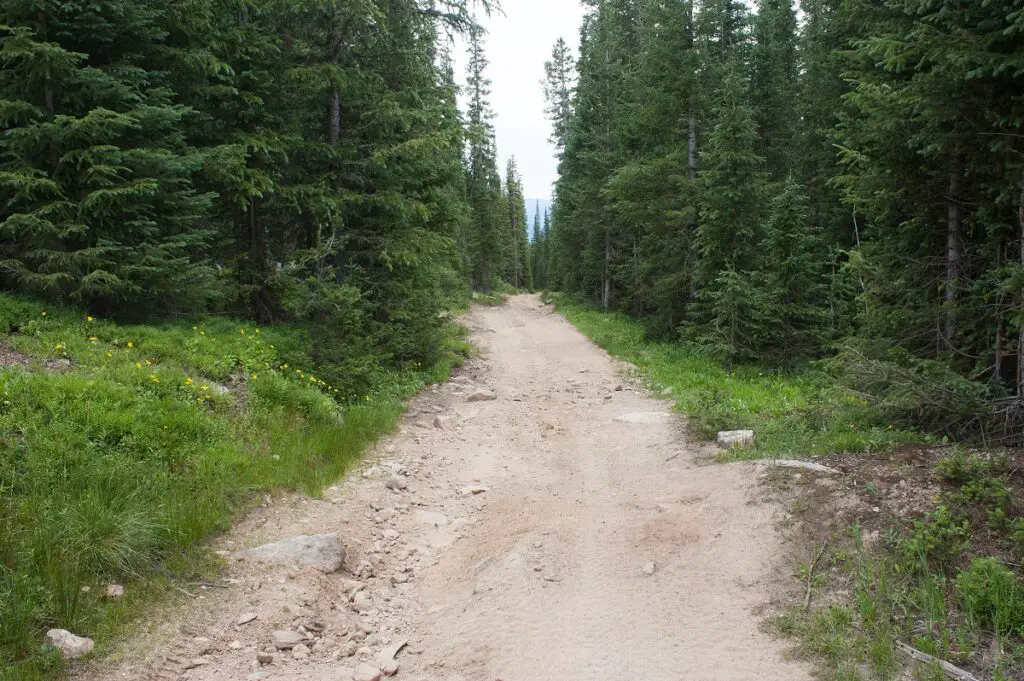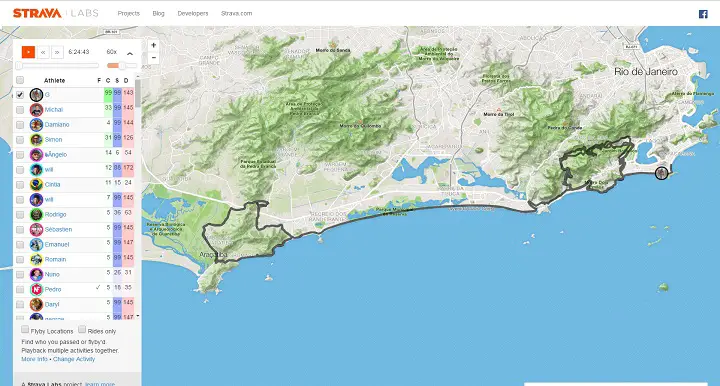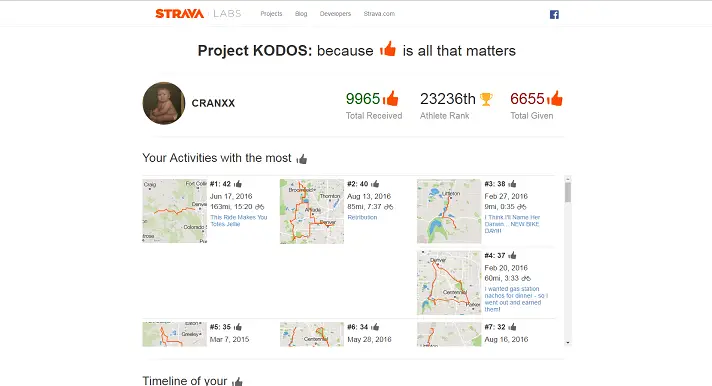Have you ever driven across the United States? It is a long, arduous trip, but with the right companions and some planning, it can be very enjoyable.
Now, what if we were to change the mode of transportation to say, a bicycle? And the trip was not across, but intersecting from the top to the bottom of the country?
Well, this is the premise of the GDMBR, or the Great Divide Mountain Bike Route. And it is a life-changing experience!

What is the Great Divide Mountain Bike Route (GDMBR)?
The GDMBR is a route developed by the Adventure Cycling Association in 1998. The route starts in Banff, Canada, and finishes in Antelope Wells, New Mexico, which is right on the border of Mexico.
Cyclers will traverse the Continental Divide, riding through diverse terrain and enduring various weather conditions. While the difficulty of the route is not the highest among biking routes, the GDMBR is not to be taken lightly.
Preparation and research are very much required. But if you are planning on braving this journey, the experience will be like no other. Here are 16 cool facts about the GDMBR to whet your appetite and give you some insight into this ride of a lifetime!
16 Cool Facts About the GDMBR
Whether you are interested in riding the route yourself, participating in the Tour Divide (the official race that follows the GDMB Route), serving as a sag wagon for someone who rides, or just enjoy watching someone else ride the route, there are many facts that you might find ti be very interesting.
For example:
The GDMBR covers over 2,700 miles!
This great distance covers the Continental Divide of the United States. And over 90% of this route is unpaved! This makes the GDMBR the longest off-pavement cycling route in the world.
The GDMBR takes place over 7 weeks.
So be prepared to travel purely by bike and on foot for almost 2 months! Here is a breakdown of the distance traveled each week:
- Week 1 – 375 miles
- Week 2 – 355 miles
- Week 3 – 355 miles
- Week 4 – 519 miles
- Week 5 – 415 miles
- Week 6 – 396 miles
- Week 7 – 396 miles
There is also a Race That Follows the Route!
The GDMBR is used for the Tour Divide, which is an annual race that usually starts in June. There is no outside support besides the use of public facilities.
As we mentioned before, the route isn’t rated the highest in terms of difficulty, but the great distance and diverse terrain make for a challenge that requires endurance and planning.
The GDMBR traverses 5 U.S. states and several cities.
Because the route covers the Continental Divide, you can expect to ride through Montana, Idaho, Wyoming, Colorado, and New Mexico. In addition, the route starts in Canada and ends on the border of Mexico.
In the first week, riders will start in Canmore, Canada, which signifies the Canadian Rockies, and finish in Whitefish, Montana.
The second week will allow riders to visit Montana’s Coffee Traders at Columbia Falls. They will also pass through Helena, the capital city of Montana, and conclude the week at Butte, Montana.
The third week takes you through several quaint villages of nostalgic charm, as well as Bannack, a ghost town that started as a booming source of gold.
Week 4 takes us through Pinedale, which is located near Gannett Peak and is one of the few authentic cowboy towns remaining.
That brings us to Week 5 in Steamboat Springs, Colorado. This route will take riders through Silverthorne and ends at Del Norte, Colorado.
During Week 6, Platoro is one of the towns that will be visited, with stunning landscape. The week ends at Grants, New Mexico.
The final week will take riders through Pie Town, known for pies, as you might have guessed, and ends at Antelope Wells, New Mexico.
The GDMBR passes through many landmarks, National Parks, and National Forests.
In Canmore, before the tour even starts, you can visit the Icefields Parkway, a national treasure of Canada. The route will allow you to witness the beauty of Banff National Park with its crystal clear lakes and Glacier National Park, as well. The GDMBR also takes you through the heart of the Rocky Mountains.
The second week of the tour will traverse the Flathead National Forest with trees up to 200 feet tall and riders will pass by Swan Lake, surrounded by the Swan Mountains, which reach heights of up to 9,000 feet. This area is also known as the Grizzly Basin, so watch out for bears! Helena National Forest will also be a part of this week’s travels.
The third week will take riders to Fleecer Ridge, best known for its grueling uphill climb but even better known for its 38% gradient downhill. Very little of civilization can be found here. You will also navigate Beaverhead-Deerlodge National Park and the Big Sheep Canyon, ending this week’s tour at Grand Teton National Park.
After traversing some of the only paved roads on the GDMBR, riders will navigate through Shoshone National Forest during Week 4, as well as Gannett Peak, which is the highest mountain in Wyoming. This route also includes the Union Pass, which sits at the head of 3 major river systems.
Week 5 brings the Routt National Forest, which brings with it a seemingly endless climb and various trees, and the Gore Mountain Range. The Colorado River and the Arapho National Forest reside along this path,as well.
Week 6 brings with it the greatest climb of the tour on the Indiana Pass, with the apex sitting at 11,910 feet. On the descent, Riders will be taken through a sea of Aspens saturated in a myriad of colors. This path leads to the San Juan Mountain Range and passes through the Rio Grande National Forest and the Carson National Forest.
The final week of the GDMBR traverses 90 miles through El Malpais National Conservation Area, or “The Badlands”, shaped and molded by volcanic forces over millions of years. The Plains of San Augustin is also a part of this path, which is believed to be the site of a UFO crash. Towards the end of this week and the tour itself, the Gila National Forest and Roberts Lake will make an entrance.
The GDMBR reaches altitudes of up to 11,913 feet, or 3,631 meters!
The Indiana Pass in Colorado is the highest point of this tour. Throughout the entire route, riders will experience elevation changes of 200,000 feet. The elevation change, as well as the frequent uphill climbing required, call for endurance on the part of riders who partake in the GDMBR.
Diverse terrain is an integral component of the GDMBR.
Riders can expect to traverse mountain ranges, deserts, forests, valleys, grasslands, and more.
The GDMBR was named one of the 100 best American adventures by National Geographic.
National Geographic described the route as “solitude that frays the edges of your brain, and a sense of what the country would look like if wilderness were the rule, not the exception”, which is fitting considering the sparsity of human settlements throughout the Great Divide and the vast array of wildlife and terrain featured within.
The GDMBR is a fully supported tour!
This is not the case for those taking part in the Tour Divide, or the race. But those taking part in the route tour will have their luggage carried in a vehicle, will have accommodations arranged, food will be prepared, and a bike mechanic will be available at all times.
The GDMBR does present some hazards…
Much of this route is unpaved and unsettled by humans. Wildlife thrives in these areas and this includes bears and cougars. Weather is also a factor that must be considered, as it can be variable, especially with the route traveling north to south.
And don’t forget the elevation changes. Your body should be somewhat acclimated to higher and lower elevations, as the GDMBR consists of both.
Proper gear is recommended!
Panniers, which are basically packs that will attach to your bicycle, are typically encouraged for carrying your immediate needs. Since the tour will provide accommodations and transport luggage for you, we’ll just cover some of the basics you’ll want with you at all times.
Of course, you’ll want solid clothing for the occasion. Since you’ll be spending extended periods sitting on your bike, a good pair of shorts is recommended. For the top, you’ll want something breathable, but make sure to pack something warmer for when the sun starts to set.
For protection, prepare a helmet that fits well and bear spray! You’ll also want medication. The sun will feature prominently throughout this tour, so sunblock, sunglasses, and sleeves to cover your arms may be a good idea.
The GDMBR can be completed in sections!
Because each part of the GDMBR is divided into individual weeks, participants can either partake of the entire tour in one sitting or one week at a time.
This is great for those who may not be able to swing a full 7 weeks of vacation time. This also means that riders can pay for individual weeks of the tour, which allows for financial flexibility.
There are several movies featuring the GDMBR!
“Ride the Divide” is an award-winning film about the Tour Divide and three characters’ experiences as participants in the race. “The Path Divided” is a film by Jonny Moses Altrogge and his experience with the GDMBR.
The GDMBR is also a common subject for Youtube videos geared towards cycling enthusiasts.
The current record for the Tour Divide is held by Mike Hall.
Mike Hall set this record in 2016, finishing the route in 13 days, 22 hours, and 51 minutes. Lael Wilcox holds a record, as well, at 15 days, 10 hours, and 59 minutes completed in 2015.
On average, the Tour Divide takes about 2 to 3 weeks to complete. There are no entry fees or prizes.
Train for the Tour Divide!
There are many strategies you can utilize for training.
Some like to emulate the load they’ll have on their bikes by adding weights to their panniers or backpacks. Others will simply ride their bicycles constantly, as they would be doing on the GDMBR tour or the Tour Divide race. Adding resistance to the wheels or using different types of tires will add an extra stimulus for training.
The primary focus here is that you increase your endurance, as this tour is long distance.
Remember that the Great Divide consists of varying terrain and that you’ll be riding under variable weather conditions. You’ll also be carrying extra items with you so there will be more load on the bike.
For this reason, it’s important to note that, when training, simply riding your bike for a long-distance may not be very effective. Instead, opt for adding resistance.
For example, you can carry weights in your backpack, as we mentioned above. Or a very effective training method would be riding your bike uphill and downhill, as this will be a maneuver frequently utilized on the GDMBR. If possible, try riding through various terrain and weather conditions.
The closer you can emulate the actual experience of traversing the Great Divide while training, the better.
The next official date for “The Great Divide” is August 16th, 2022.
This is the 6th edition of “The Great Divide”. The tour will again start in Canmore, Canada and finish on October 6th, 2022 near Antelope Wells, New Mexico.






